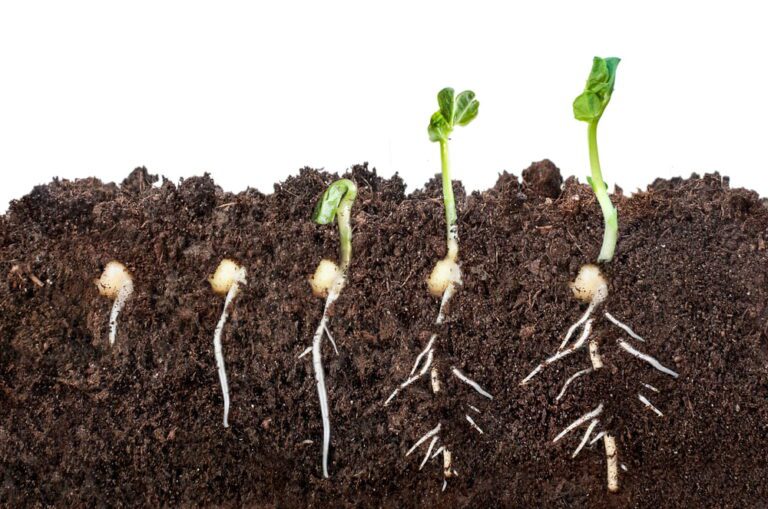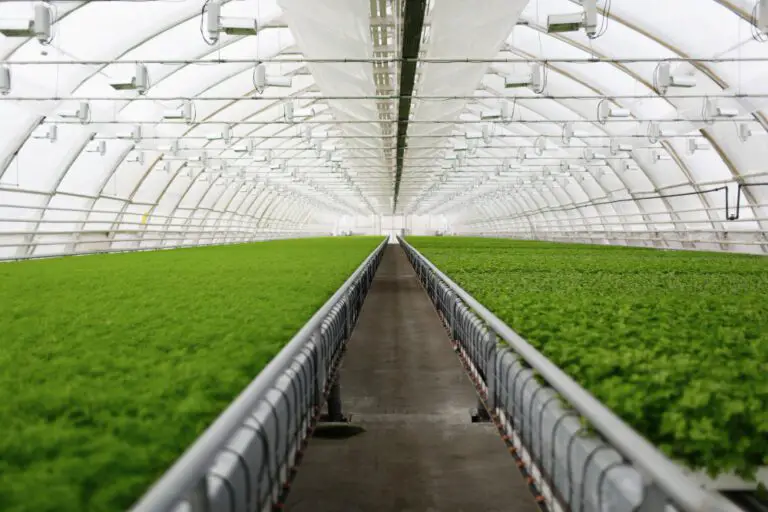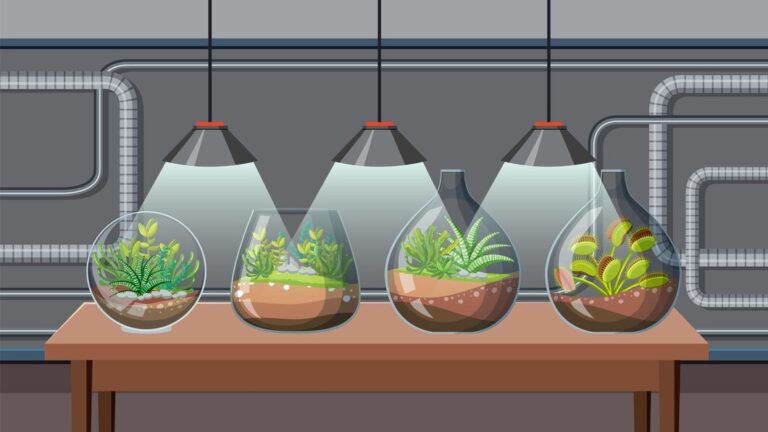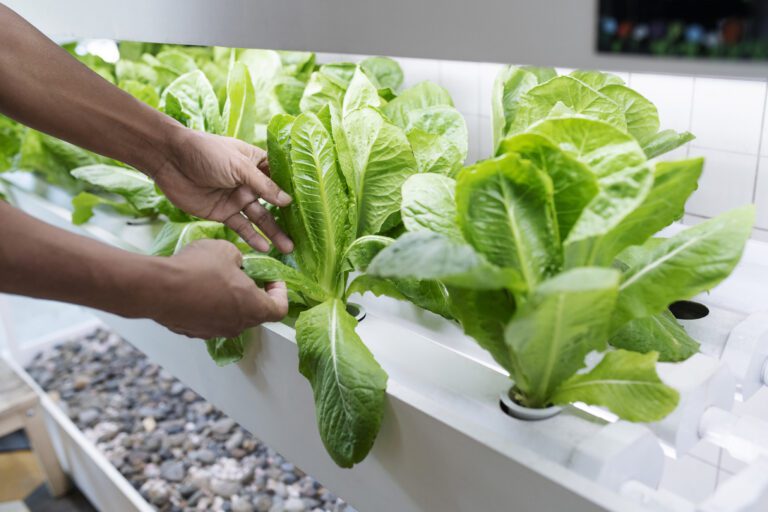Don’t Make These 10 Costly Mistakes as an Indoor Hydroponic Gardener
Table of Contents
Indoor Hydroponic Gardening Mistakes to Avoid: A Comprehensive Guide
Research and planning are crucial steps in ensuring success in indoor hydroponic gardening. Many beginners make the mistake of diving into the hobby without fully understanding the basics and setting realistic expectations. To avoid this, take the time to learn about different hydroponic systems and their requirements. Understand the necessary environmental factors such as temperature, humidity, and air circulation. Research the specific plants you intend to grow and their nutrient needs. By doing this, you will be better equipped to make informed decisions and create a favorable growing environment for your plants.
One of the most important considerations in indoor hydroponic gardening is lighting. Choosing the right type and intensity of light is crucial for healthy plant growth. Ignoring the importance of lighting can lead to stunted growth and poor yields. Investing in high-quality grow lights that emit the necessary spectrum of light can make a significant difference in your plants’ success. Additionally, it is important to ensure that the lights are properly positioned and timed to provide the appropriate amount of light each day. By addressing this mistake and giving proper attention to lighting, you can significantly improve the overall productivity of your indoor hydroponic garden.

1) Failing to research and plan: The first mistake many indoor hydroponic gardeners make is diving into the hobby without proper research and planning. Understanding the basics and setting realistic expectations is essential for success.
When it comes to indoor hydroponic gardening, one common mistake that many enthusiasts make is diving into the hobby without proper research and planning. It’s crucial to take the time to understand the basics of hydroponics and set realistic expectations for success. Without this foundational knowledge, gardeners may find themselves overwhelmed or frustrated by unexpected challenges.
Researching and planning before starting your indoor hydroponic garden can save you time, money, and potential disappointment. By learning about different types of hydroponic systems, understanding nutrient requirements, and familiarizing yourself with common pests and diseases, you can make informed decisions and set up your garden for success. Taking this proactive approach will help you anticipate and address potential issues, ultimately leading to healthier plants and better yields. So, remember, take the time to research and plan before embarking on your indoor hydroponic gardening journey.
2) Ignoring the importance of lighting: Adequate lighting is crucial for indoor hydroponic gardening. Neglecting to invest in the right type and intensity of lighting can result in stunted growth and poor yields.
Adequate lighting is an essential aspect of successful indoor hydroponic gardening. Neglecting to invest in the right type and intensity of lighting can severely impact plant growth and ultimately result in stunted growth and poor yields. Plants rely on light for photosynthesis, the process by which they convert light energy into chemical energy to fuel their growth. Without adequate light, plants are unable to produce the necessary nutrients and energy to thrive.

When it comes to indoor hydroponic gardening, the quality and quantity of light can make a significant difference in plant health and productivity. Different plants have varying light requirements, so it is crucial to choose the appropriate lighting system for your specific crop. Full-spectrum LED lights are a popular choice because they provide the necessary wavelengths for optimal plant growth. High-intensity discharge (HID) lights, such as metal halide and high-pressure sodium lamps, are also commonly used for their intense light output. Whatever lighting system you choose, it is essential to ensure that it emits sufficient light intensity and covers the entire plant canopy for uniform growth.
3) Overlooking proper ventilation: Good air circulation is vital for plant health in hydroponic systems. Neglecting ventilation can lead to high humidity, mold, and disease.
Proper ventilation is often overlooked by many indoor hydroponic gardeners, but it plays a vital role in plant health and overall success. Good air circulation is essential for creating an optimal growing environment for your hydroponic plants. Without proper ventilation, you run the risk of high humidity levels, which can lead to the growth of mold and the development of diseases.
When humidity levels are high, the excess moisture in the air can create the perfect conditions for mold to thrive. Mold can quickly spread and take hold on your plants, causing damage to their leaves, stems, and roots. Additionally, the lack of air movement can create stagnant air pockets where pathogens and diseases can breed, further compromising the health of your plants.
| Aspect | Importance |
|---|---|
| Health Benefits | Proper ventilation ensures fresh air circulation, reducing the risk of respiratory problems and promoting overall well-being. |
| Mold and Moisture Control | Adequate ventilation helps prevent the build-up of moisture, which can lead to mold growth and damage to structures. |
| Temperature Regulation | Ventilation aids in maintaining a comfortable indoor temperature by allowing the removal of excess heat and promoting air circulation. |
| Odor Elimination | Good ventilation helps eliminate unpleasant odors, improving the overall indoor air quality and creating a more pleasant environment. |
| Energy Efficiency | Properly designed ventilation systems can contribute to energy efficiency by optimizing airflow and reducing the need for excessive heating or cooling. |
| Building Longevity | Adequate ventilation can extend the lifespan of buildings and materials by preventing condensation, which can lead to corrosion and decay. |
| Compliance with Codes | Meeting ventilation standards and codes is essential for regulatory compliance, ensuring the safety and well-being of occupants. |
| Occupant Productivity | Well-ventilated spaces are associated with increased productivity and cognitive function among occupants. |
| Carbon Dioxide (CO2) Levels | Monitoring and controlling CO2 levels through proper ventilation helps maintain a healthy indoor environment. Elevated CO2 can lead to drowsiness and decreased cognitive function. |
To avoid these potential issues, it is important to incorporate proper ventilation into your indoor hydroponic setup. This can be achieved by using fans to circulate the air and create a gentle breeze around the plants. The movement of air helps to reduce humidity levels and prevent mold growth. It also helps to strengthen the plants’ stems and promote healthy, robust growth.
By prioritizing ventilation in your indoor hydroponic garden, you can create a conducive environment that promotes plant health and productivity. The investment in proper air circulation will not only protect your plants from the harmful effects of high humidity, mold, and disease but also increase the overall success and yield of your hydroponic garden. Don’t underestimate the importance of good ventilation – your plants will thank you for it.
4) Neglecting pH levels: Maintaining the correct pH levels is crucial for nutrient absorption in hydroponic systems. Ignoring pH levels can lead to nutrient deficiencies or toxicities, impacting plant growth.
Maintaining the correct pH levels is a fundamental aspect of successful indoor hydroponic gardening. pH refers to the acidity or alkalinity of the nutrient solution in which plants grow. Each plant has its own pH preference, and maintaining the optimal range is crucial for nutrient absorption and overall plant health.
When pH levels are ignored or not properly adjusted, it can lead to nutrient deficiencies or toxicities, both of which can negatively impact plant growth. For example, if the pH is too low (acidic), certain essential nutrients like phosphorus, nitrogen, and potassium become less available to plants, resulting in nutrient deficiencies. On the other hand, if the pH is too high (alkaline), the same nutrients can become excessively available, leading to nutrient toxicities. These imbalances can stunt plant growth, weaken the immune system, and make plants more susceptible to diseases and pests.
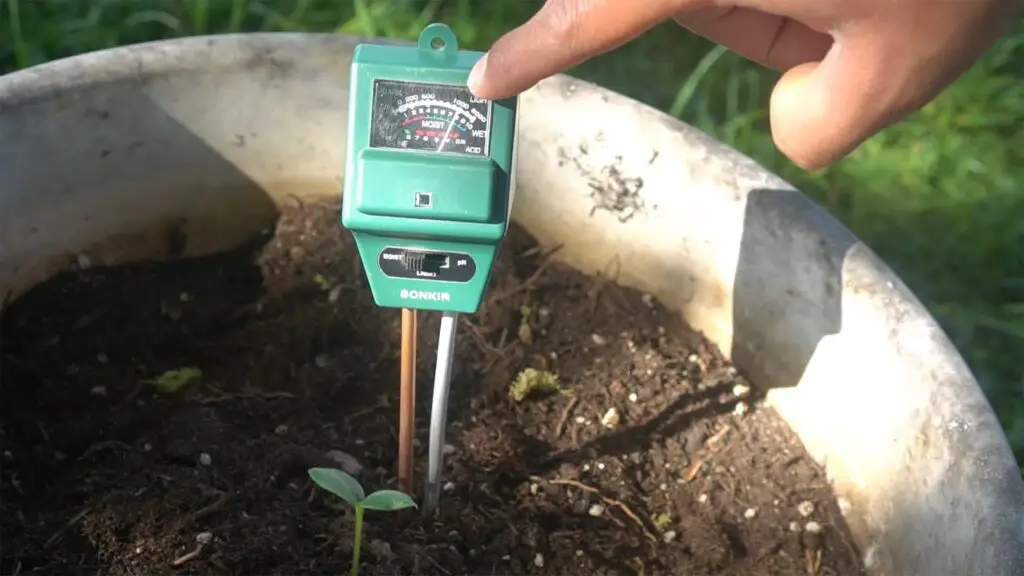
To ensure proper pH levels, gardeners must regularly test their nutrient solution using a pH meter or test kit. The ideal pH range for most hydroponic plants falls between 5.5 and 6.5, although some plants might have slightly different preferences. Adjusting the pH can be done by adding pH up or pH down solutions to the nutrient solution, depending on whether the pH needs to be increased or decreased. Monitoring and maintaining the correct pH levels will help maximize nutrient absorption and promote healthy plant development in indoor hydroponic gardens.
5) Overfeeding or underfeeding plants: Finding the right balance of nutrients is essential in hydroponic gardening. Overfeeding or underfeeding can harm plant health and productivity.
Finding the right balance of nutrients is crucial for the success of your indoor hydroponic garden. Overfeeding or underfeeding your plants can have detrimental effects on their health and productivity. When plants are overfed, they can suffer from nutrient burn, which occurs when there is an excess of nutrients in the growing medium. This can lead to leaf browning, yellowing, and even plant death.
On the other hand, underfeeding your plants can result in nutrient deficiencies, which can stunt their growth and weaken their overall health. Nutrient deficiencies can manifest in various ways, such as yellowing leaves, poor fruit development, and reduced yields. It is important to understand the specific nutrient needs of your plants at different growth stages and provide them with the appropriate concentration of nutrients.
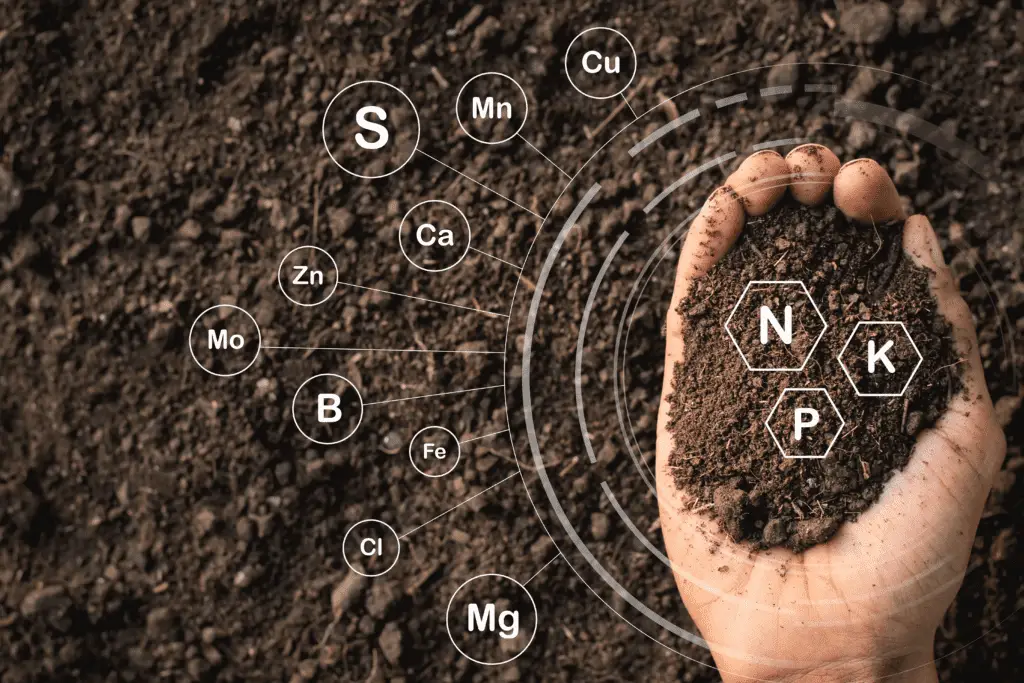
To avoid overfeeding or underfeeding your plants, it is recommended to closely monitor their nutrient requirements and adjust the nutrient solution accordingly. This can be done by regularly testing the pH and nutrient levels in your hydroponic system and making necessary adjustments. Keep in mind that different plant species may have different nutrient requirements, so it is important to research and understand the specific needs of the plants you are growing. Remember, finding the right balance is key to ensuring healthy, thriving plants in your indoor hydroponic garden.
• Overfeeding or underfeeding plants can harm their health and productivity
• Overfeeding can lead to nutrient burn, resulting in leaf browning, yellowing, and even plant death
• Underfeeding can cause nutrient deficiencies, leading to stunted growth and weakened overall health
• Understanding the specific nutrient needs of your plants at different growth stages is crucial
• Regularly testing pH and nutrient levels in your hydroponic system is recommended
• Adjusting the nutrient solution based on test results will help avoid overfeeding or underfeeding
• Different plant species may have different nutrient requirements
• Researching and understanding the specific needs of your plants is important for maintaining a healthy indoor hydroponic garden.
6) Neglecting water quality: Poor water quality can hinder plant growth and lead to nutrient imbalances. Ensuring water is free from contaminants and maintaining proper water temperature
Poor water quality is one of the common mistakes overlooked by many indoor hydroponic gardeners, often leading to hindered plant growth and nutrient imbalances. It is crucial to ensure that the water used in hydroponic systems is free from contaminants and that the proper water temperature is maintained. Contaminants such as chlorine, heavy metals, and pathogens can negatively impact the health and productivity of your plants. These substances can inhibit nutrient absorption and disrupt essential biological processes, resulting in stunted growth and compromised yields.
Maintaining the correct water temperature is equally important. Extreme temperatures, whether too hot or too cold, can stress the plants and affect their ability to uptake water and nutrients effectively. To tackle this, consider using a water chiller or a heater depending on the needs of your specific hydroponic system. Keeping a close eye on water temperature and ensuring it remains within the optimal range will contribute to the overall success of your indoor hydroponic garden. By addressing water quality concerns and maintaining appropriate water temperature, you lay the foundation for healthy and thriving plants in your hydroponic system.
How can poor water quality affect plant growth in hydroponic gardening?
Poor water quality can hinder plant growth by causing nutrient imbalances. Contaminants in the water can also negatively impact the plants’ ability to absorb nutrients effectively.
What are some common contaminants that can be found in water for hydroponic gardening?
Common contaminants that can be found in water for hydroponic gardening include chlorine, heavy metals, pesticides, and bacteria. These contaminants can be harmful to the plants and affect their growth.
How can I ensure that the water used in my hydroponic system is free from contaminants?
To ensure water quality, you can use a water filtration system specifically designed for hydroponic gardening. This can help remove contaminants and provide cleaner water for your plants.
Why is maintaining proper water temperature important in hydroponic gardening?
Maintaining proper water temperature is important because it affects the plants’ ability to absorb nutrients and can impact their overall health. Extreme temperatures can stress the plants and lead to poor growth and nutrient imbalances.
What is the ideal water temperature for hydroponic gardening?
The ideal water temperature for hydroponic gardening is generally between 65°F (18°C) and 75°F (24°C). This temperature range promotes optimal nutrient uptake and plant growth.
How often should I check the water quality in my hydroponic system?
It is recommended to regularly check the water quality in your hydroponic system, especially when using tap water or water from a questionable source. A weekly or bi-weekly check is a good practice to ensure the water remains free from contaminants.

Pallavi Gupta is a burgeoning writer at SouthElMonteHydroponics, blending her passion for data analysis with a keen interest in biotechnology. Currently pursuing a Bachelor’s in Biotechnology at Amity University, Pallavi delves into the intricacies of life sciences while gaining hands-on experience in the exciting world of data analysis. Her unique background provides a fresh perspective on hydroponic farming, as she explores the intersection of biotechnology and sustainable agriculture. Through her writing, Pallavi aims to bridge the gap between data-driven insights and innovative farming practices, inspiring others to harness technology for a greener future.


